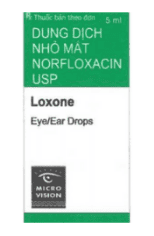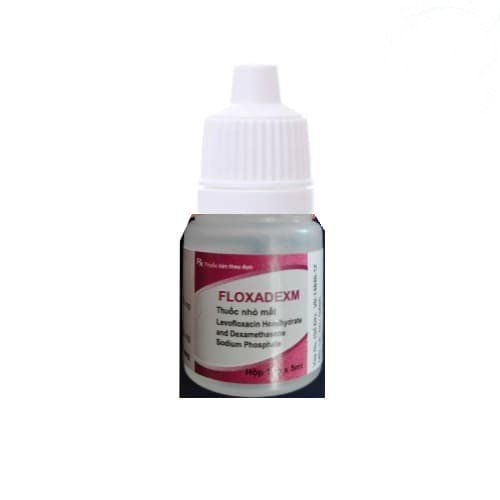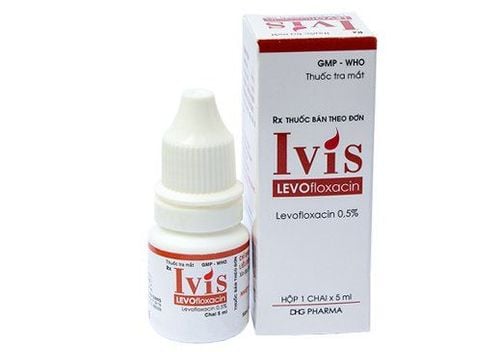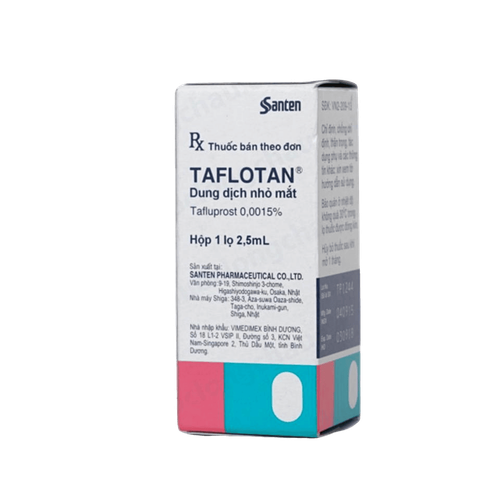This is an automatically translated article.
Tifoxan is an eye drop that contains Ofloxacin as the main ingredient. So what disease does Tifoxan treat and how to use this drug? Please read the following article.
1. What disease does Tifoxan treat?
Tifoxan is an antibiotic drug in the form of eye drops, with the main ingredient in each 5ml vial of 15mg Ofloxacin.
Ofloxacine is a fluoroquinolone antibiotic like Ciprofloxacin, but when taken orally Ofloxacine will have a bioavailability higher than 95%. Ofloxacin has a broad spectrum of antibacterial activity including Pseudomonas aeruginosa, Enterobacteriaceae, Staphylococcus, Haemophilus influenzae, Neisseria spp., Streptococcus pneumoniae and several other gram-positive bacteria.
Ofloxacin has stronger effect than Ciprofloxacin against Chlamydia trachomatis, Mycoplasma pneumoniae, Ureaplasma urealyticum bacteria. Ofloxacin is also active against Mycobacterium leprae and also Mycobacterium spp. other. Ofloxacin is an antibiotic with bactericidal action. The mechanism of action of this antibiotic is not fully known. Like other quinolone antibiotics, Ofloxacin inhibits DNA-gyrase, an enzyme essential for bacterial DNA replication, transcription, and repair.
Tifoxan is indicated in cases of infections outside the eye in both adults and children caused by bacteria sensitive to ofloxacin, including:
Blepharitis ; Phony eye; Inflammation of the lacrimal sac; Conjunctivitis ; Blepharitis; Keratitis ; Corneal ulcer; Ear infections; Infection after surgery. Tifoxan is contraindicated in the following cases:
People with hypersensitivity to ofloxacin or other components of the drug; People with a history of hypersensitivity and tendonitis caused by drugs of the Quinolone group. Pay attention to precautions when using Tifoxan in the following cases:
Children; Pregnant; Women are breastfeeding.
2. Dosage and how to use Tifoxan
Tifoxan is an eye drop. Dosage of Tifoxan should be according to the doctor's prescription, the reference dose for all ages is as follows:
Instill 1-2 drops into the affected eye every 24 hours for the first 2 days and then 4 times per day for the following days. The duration of treatment with Tifoxan should not exceed 10 days. In case you overdose on Tifoxan, you need to immediately go to medical facilities for treatment according to the symptoms encountered. And be monitored electrocardiogram, because there is a risk that the drug causes prolongation of the QT interval on the electrocardiogram.
3. Tifoxan side effects
In the process of using Tifoxan eye drops, you may encounter some side effects of the drug, including:
Eye allergies such as itchy eyes; Anaphylactic reactions such as angioedema, dyspnoea, pharyngitis, facial edema, tongue swelling, anaphylaxis; Dizzy ; Eye irritation; Discomfort in the eyes; Conjunctivitis; Keratitis; Blurred vision ; Photophobia; Eye edema; Eyeballs; Increased tear secretion; Dry eyes ; Eyesore; Eye congestion; Edema around the eyes including swelling of the eyelid margins; Ventricular arrhythmias and torsades de pointes mainly occur in patients with risk factors for QT prolongation; QT interval prolongation; Nausea; Stevens-Johnson syndrome ; Toxic epithelial necrosis. If you see any unusual symptoms while using Tifoxan, you should immediately notify your doctor or go to a medical facility for timely support.
4. Tifoxan drug interactions with other drugs
There have been no drug interaction studies with Tifoxan eye drops.
Above is some information about the uses, doses and notes when using Tifoxan. To ensure safety for your health and maximize the effectiveness of your treatment, you need to take Tifoxan exactly as directed by your doctor.
Please dial HOTLINE for more information or register for an appointment HERE. Download MyVinmec app to make appointments faster and to manage your bookings easily.













